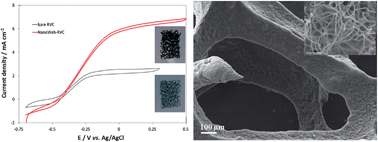The nanostructure of three-dimensional scaffolds enhances the current density of microbial bioelectrochemical systems†
Abstract
Bioelectrochemical systems encompass a range of electrochemical systems wherein microorganisms are used as biocatalysts. These range from classical microbial


 Please wait while we load your content...
Please wait while we load your content...